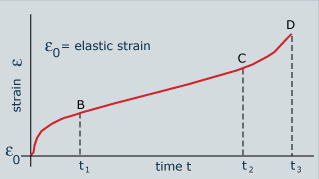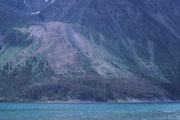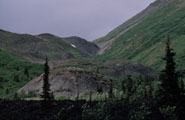 |
|
|
|
|
|
|
As supersaturated permafrost, which is mainly ice lenses
(sergrgation ice), originates frost heaves occur and when the ice melts
thaw settlement starts. |
|
primary heave |
secondary heave | |
| ice lens building at the freezing front | ice enrichment behind the freezing front |
|
The most important factors are: |
|
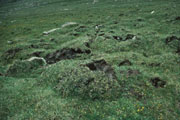 1 - Frost blister in the Tien Shan mountains, China (184K) |
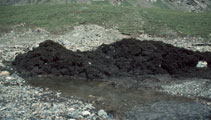 2 - Frost mound in the Tien Shan mountains, China (124K) |
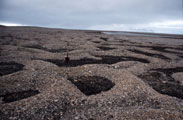
3 - Sorted circles, Spitzbergen, Savalbard (128K) |
|
|
|
Frozen soil is typically stronger then unfrozen soil or ice, but it displays a time-dependent creep behaviour similar to ice. The strength of frozen ground can be considered as consisting of the cohesion of the ice matrix and frictional resistance of the soil particles. The viscoplastic strength and deformation characteristics may be attributed largely to the presence of the ice matrix and cementation bonds. However, the composite behaviour of the frozen soil may not be a simple sum of the structural components, and some complex interaction apparently exists between the ice and the soil components.
|
|
| Such a deformation is an elastic one. If the stress is large enough and is applied for a considerable time, deformation continues, but at a decreasing rate. Conventionally, all this is called primary creep. After a period of perhaps hours, the deformation may assume (B in Figure 4) a fairly steady rate for a considerable length of time. If conditions (especially temperature) do not change, then after a certain period (which could be day, weeks or much longer, depending on the applied stress) the strain rate will again increase (acceleration, C in Figure 4) leading inevitably to failure. The constant rate of strain is referred to as secondary creep, and the following acceleration stage as tertiary creep. |
4 - Classical creep curve |
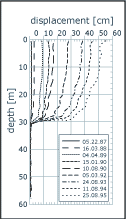
|
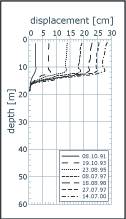 |
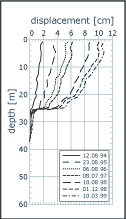 |
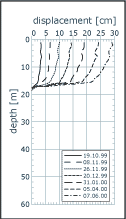 |
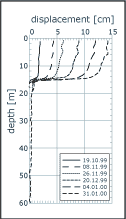 |
| A | B | C | D | E |
|
5 - Horizontal downslope borehole deformation in five boreholes in the Eastern Swiss Alps: |
||||
|
A Murtèl-Corvatsch, borehole
2/1987:1987-1995 |
||||
| Source: Arenson et al. (2002) | ||||
29 August 2011 |
||
| |
||
